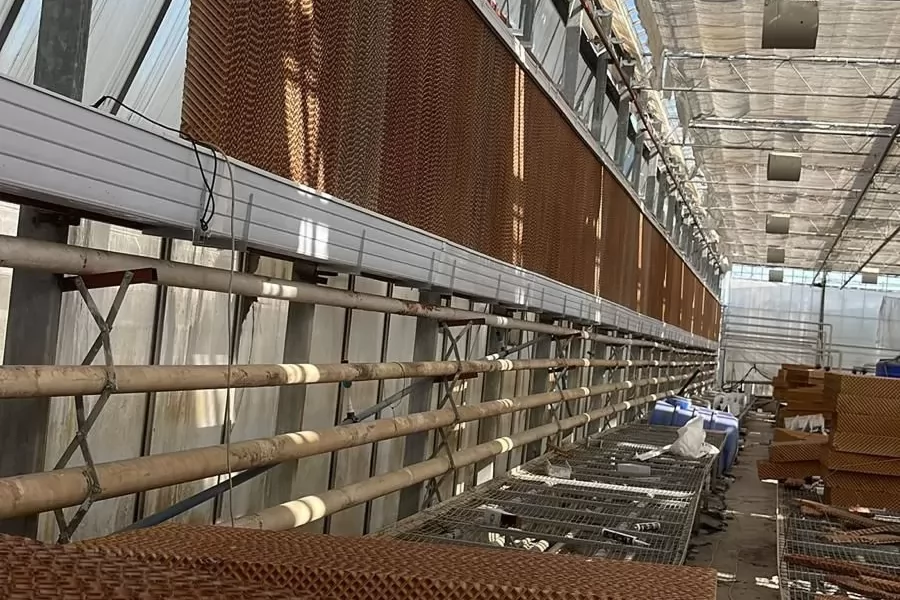The Use of Evaporative Cooling Pads in Poultry Farms and Greenhouses
• Evaporative Cooling Pads in Poultry Farms
Importance of Cooling in Poultry Farms
- Poultry requires a moderate temperature environment to ensure healthy growth and high productivity.
- High temperatures lead to heat stress, affecting poultry weight and egg production.
How the System Works
- Evaporative cooling pads are installed on one side of the poultry house, while exhaust fans are placed on the opposite side.
- As hot air passes through the water-saturated pads, its temperature decreases, cooling the air inside the farm.
Benefits of Evaporative Cooling in Poultry Farms
✅ Reduces heat stress: Helps maintain a suitable temperature for poultry.
✅ Improves growth rate and production: Poultry in a cooler environment consume feed more efficiently.
✅ Lower mortality rates: Good ventilation reduces disease spread.
✅ Energy-efficient: Consumes less electricity compared to traditional cooling systems.
Key Considerations for Using Cooling Pads in Poultry Farms
- Choosing the appropriate pad thickness (10 cm - 15 cm) based on the farm size.
- Using clean water to prevent mineral buildup that may affect cooling efficiency.
- Regular cleaning and maintenance of the pads and fans to ensure optimal performance.
• Evaporative Cooling Pads in Greenhouses
Importance of Cooling in Greenhouses
- Plants need moderate temperatures to grow healthily and produce high-quality crops.
- Evaporative cooling prevents plant dehydration and maintains proper humidity levels inside the greenhouse.
How the System Works
- Cooling pads are installed on one side of the greenhouse, with exhaust fans on the opposite side to pull out hot air.
- As air passes through the moist pads, its temperature drops before entering the greenhouse.
Benefits of Evaporative Cooling in Greenhouses
✅ Increases crop productivity: By providing an optimal growth environment.
✅ Reduces irrigation needs: Evaporative cooling helps maintain air humidity.
✅ Lower operational costs: Consumes less energy compared to traditional air conditioning.
✅ Enhances crop quality: By reducing heat-related damage.
Key Considerations for Using Evaporative Cooling in Greenhouses
- Selecting a cooling system suitable for the greenhouse size and plant types.
- Adjusting humidity levels to prevent fungal issues or root rot.
- Regularly cleaning and replacing pads to prevent dust accumulation that may affect airflow.
Comparison Between Evaporative Cooling in Poultry Farms and Greenhouses
| Factor | Poultry Farms | Greenhouses |
|---|---|---|
| Main Objective | Reducing heat stress and improving poultry health | Enhancing plant growth conditions and increasing productivity |
| Required Temperature | Between 20-25°C | Between 18-28°C, depending on the crop type |
| Humidity Requirements | Should not exceed 70% to avoid respiratory issues in poultry | Between 60-80% to support plant growth |
| Water Consumption | Moderate, with a need for water quality monitoring | Higher due to continuous humidification needs |
Conclusion
Evaporative cooling is a cost-effective and efficient solution for both poultry farms and greenhouses. It helps improve poultry health and crop quality while reducing energy consumption compared to conventional cooling systems. However, regular maintenance and good water quality are essential to maintaining long-term efficiency.







